WABI-K.300 - Walter Biedenbach
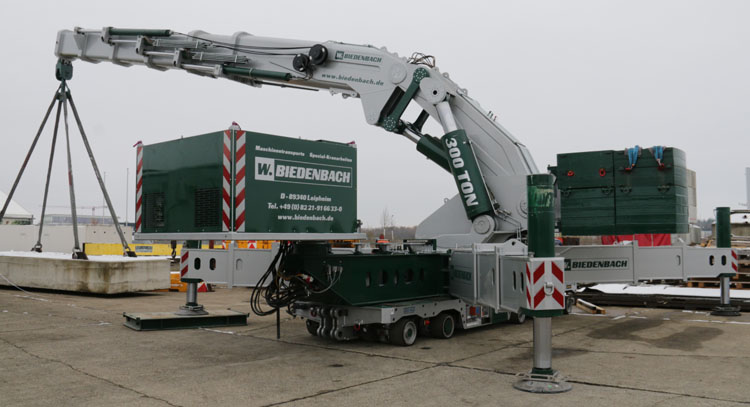
This is the new heavy indoor crane of Walter Biedenbach from Leipheim (D). The new model is called WABI-K.300 and is a in-house development of Biedenbach.
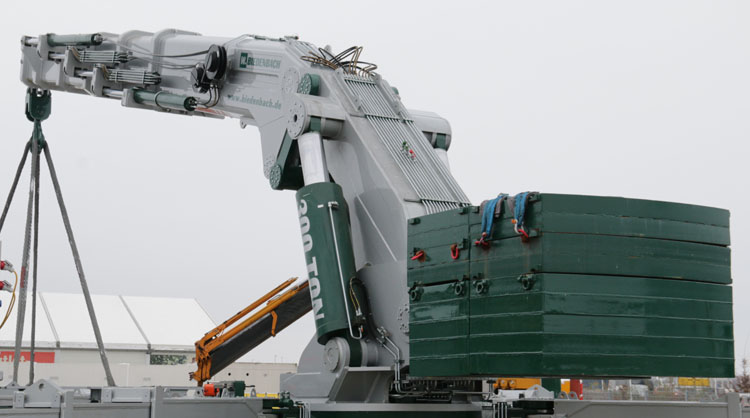
The boom extends 5x and reaches up to 18 meters. A special manual jib with 6 additional meters can be installed. That is also a perfect tool for lifting close under the roof. A special solution in this telescopic boom is, that all extensions can be extended seperately. So the operator has the choice which extenions extend at any time. This way you can configure the boom for each specific lifting job. In normal knucklebooms the extensions are controlled by pressure valves, and the operator has no control over the process. The first 3 extensions need double cylinders to move/hold the load, the last 2 extensions only need a single cylinder.
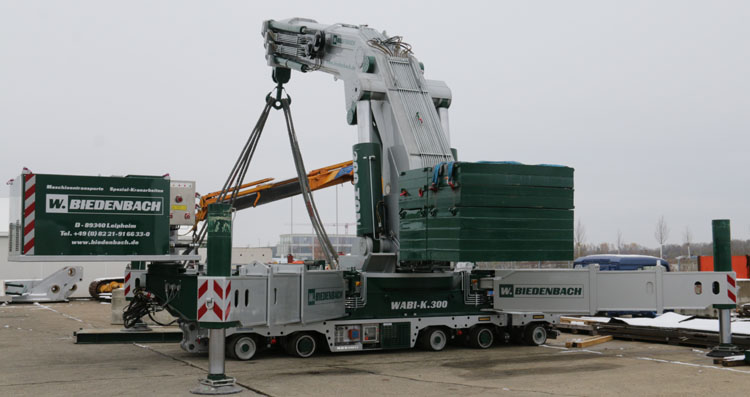
The base concept is identical to that of the WABI-K.150, so a Greiner Sefiro 4+1 platform (an electrical version this time) is used to transport the crane. This crane can also be completely assembled outside of the building, to then go inside for a quick lifting job. A concept that has proven itself with the WABI-K.150 crane.
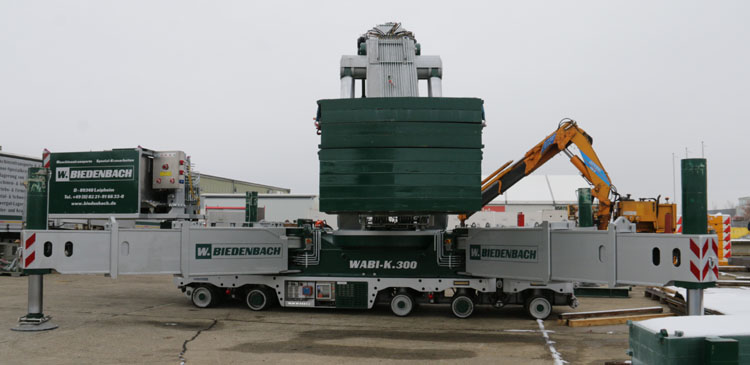
The x-shaped outriggers offer a very flexible setup. The 3x extending outriggers can swivvel up to 90°, meaning a good position to support the crane can almost always be found.
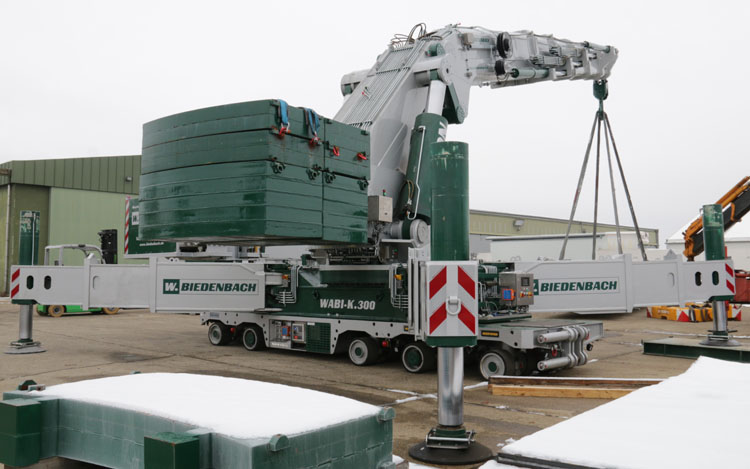
Behind the crane hangs a total of 60 tons ballast. Here the blocks are hanging behind eachother, but if it get's cramped they can also be stacked.
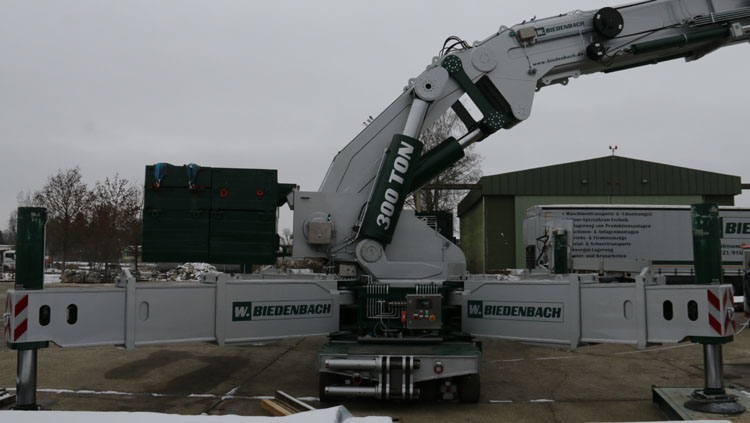
The crane is developed by Biedenbach, based on the experiences of many years of heavy indoor usage with both WEMB108 cranes and the WABI-K.150. It was assembled in Austria. The own weight of the crane alone is 80 tons, it will be transported on a Goldhofer 3-6 lowloader.
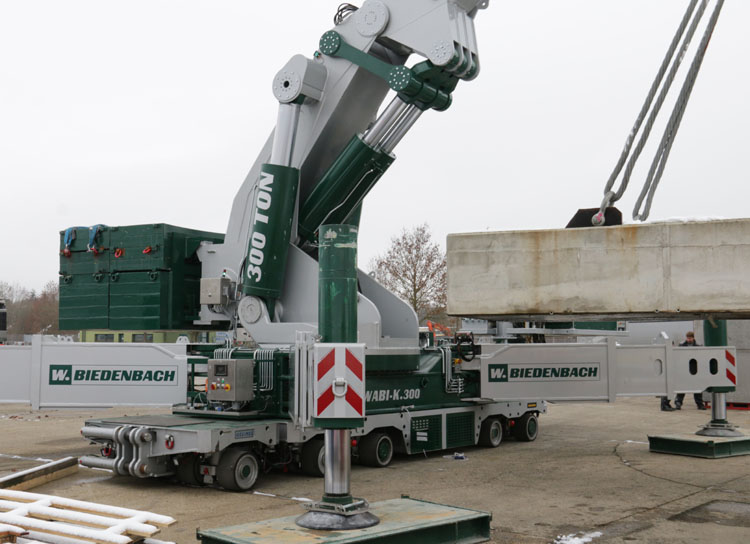
The main boom is raised by 2 gigantic cylinders. Underneath it we see 2 more large cylinders that move the telescopic boom. The whole construction was built in such a way, that it can be lowered as low as possible during transport.

The powerpack holds a 250 kW Volvo Penta engine and is installed on a swivveling platform. When ballast is installed, it will swivvel outwards like here. During transport, the powerpack will be swivveled inwards to become more compact. The powerpack supplies the crane with hydraulics via 2x100 liter pumps. A 55 kVA generator is installed to supply the Greiner Sefiro batteries with power. Furtermore it has an Oilcooler and -heater, and it is planned to be able to operate fully electric.
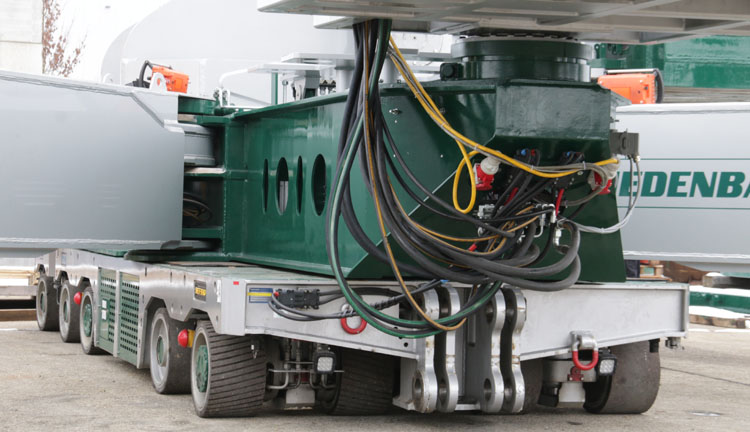
The Sefiro platform allows axle loads up to 38 tons, so up to 190 ton total are possible. The crane chassis here is very solide, as on top there is the ballast table. That can lift the total weight of 60 tons for self-ballasting.
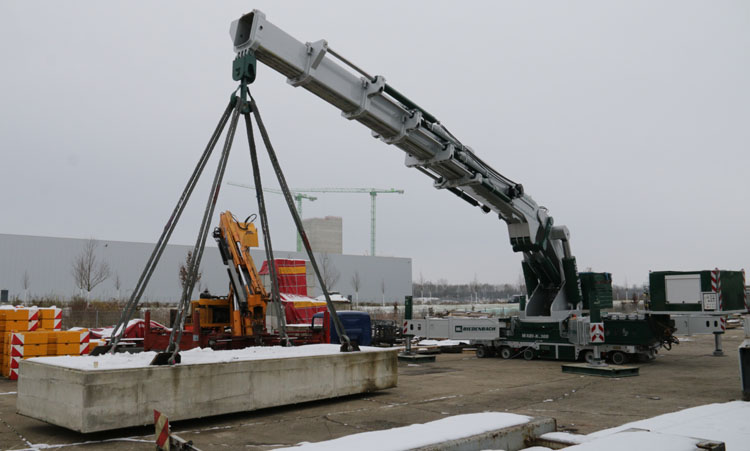
Some lifting tests where conducted on this day. Here they started with 55 tons at 16,2 meters.
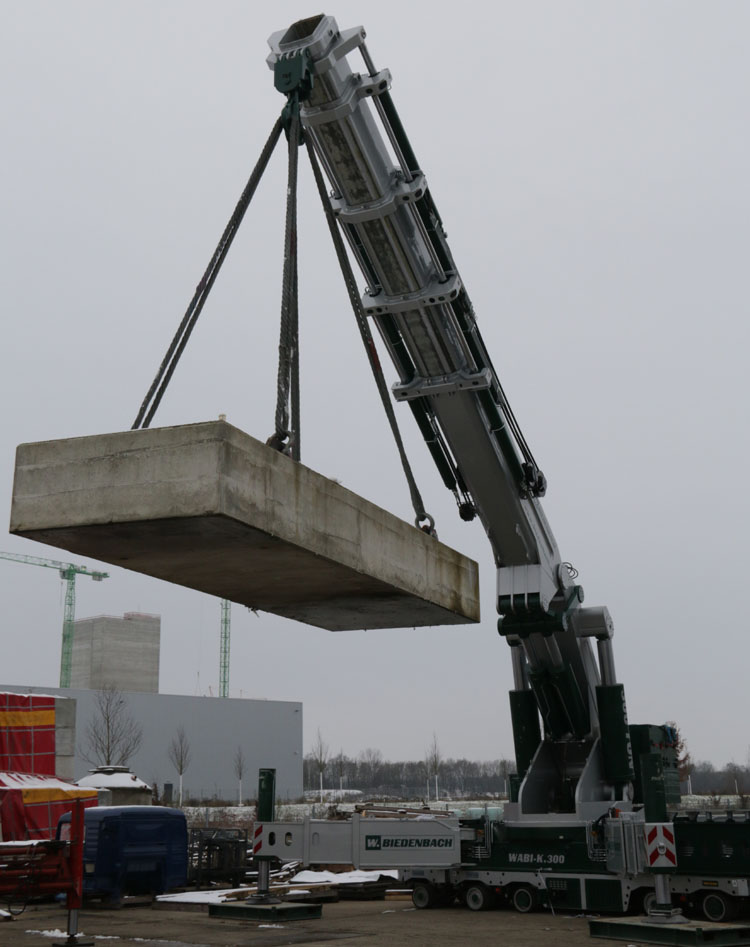
This is a weight that is clearly not an problem for this crane!
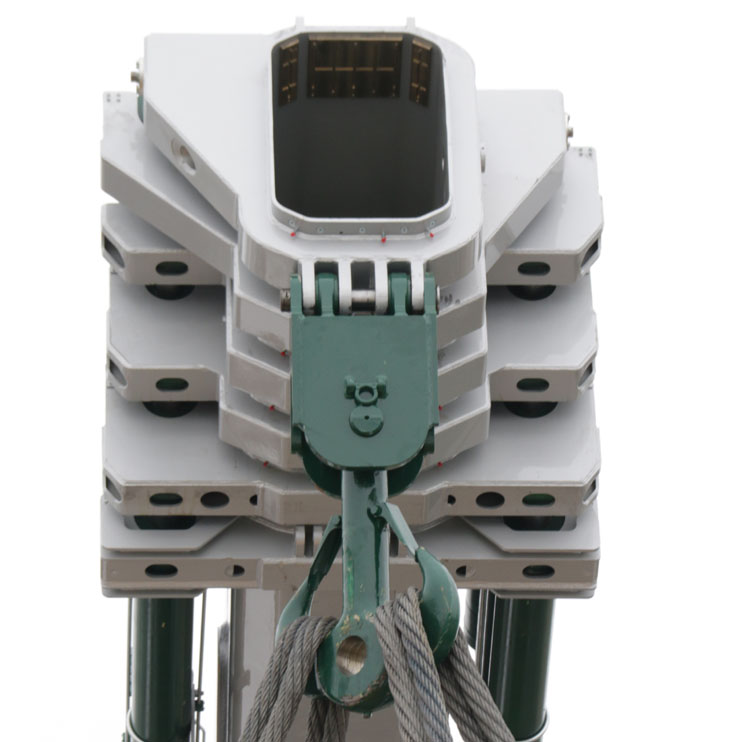
Here we see the crane head and the hook, both where built for loads up to 200 ton. A head with sheves for usage with a winch is still being built, also a very heavy jib is planned.
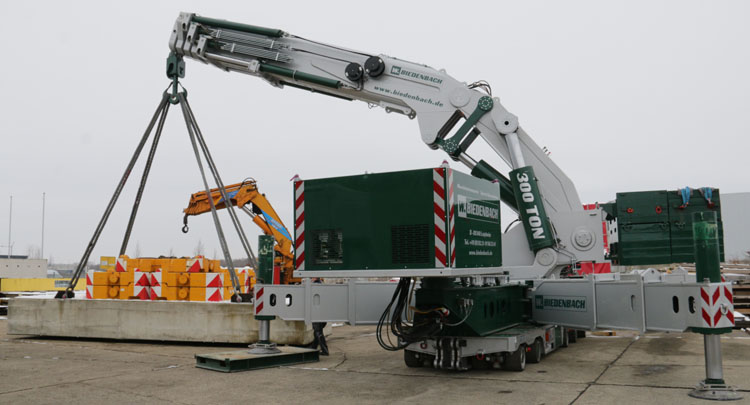
Here we move on with 105 tons of test weight. The WEMB in the background has just added 5 x 10t ballast pieces.
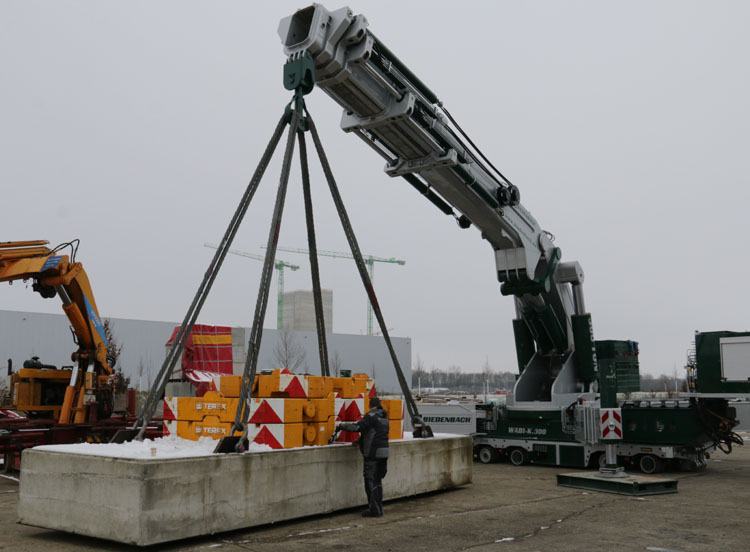
This load was lifted up to 10,9 meters, which gives an impressive capacity of 1145 Ton/Mtr!
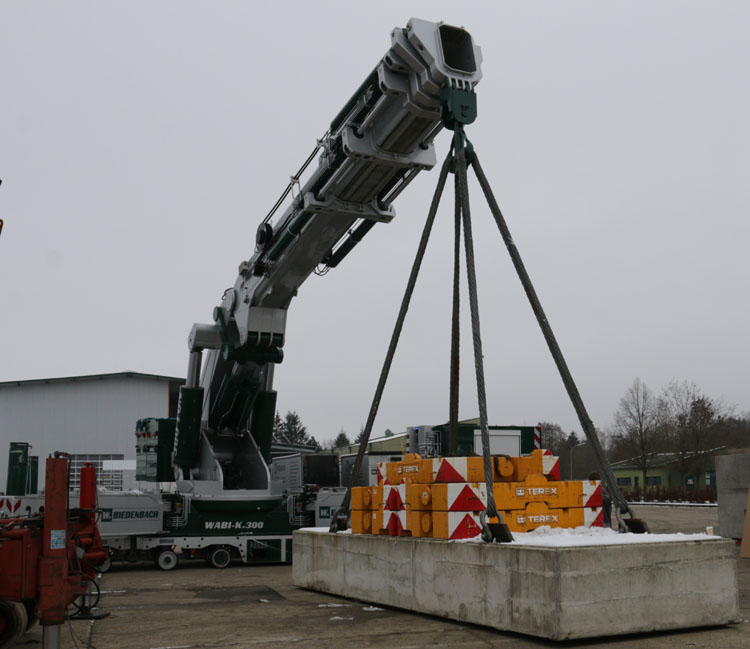
Please notice how little the boom bends during this heavy lift. This 105 ton load is definitely relevant, as the machines that they install are getting more and more heavier.
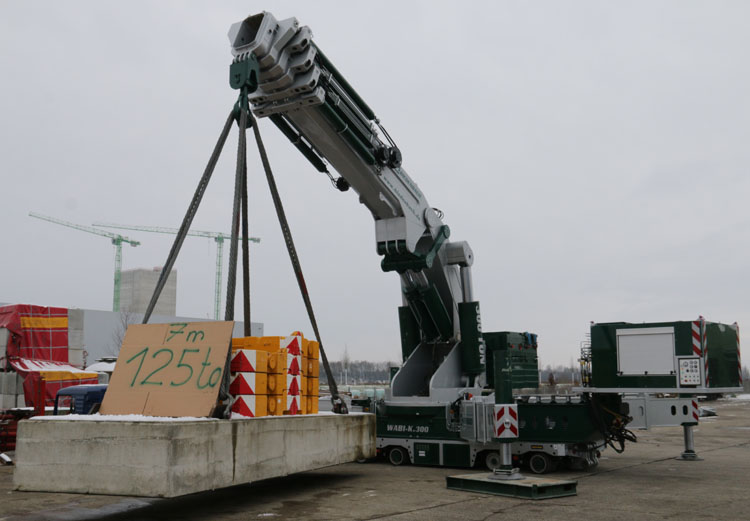
Finally this mass of 125 ton was lifted at 7 meters. The hydraulics on this crane are not at their limit yet, so higher values should be possible in the future. But for now, this is the configuration in which it will start working.
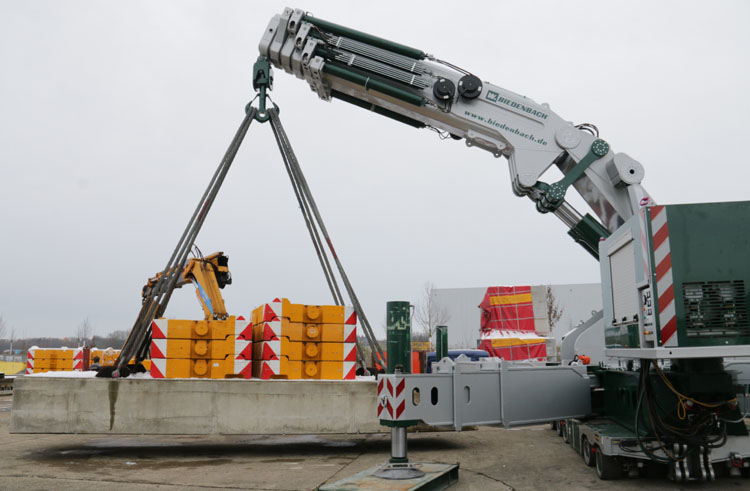
A very nice new crane, again specifically designed for the special heavy indoor work on cramped locations!
Below you can see a video of this crane during testing.
And this was the teaser-video that I made earlier this year. As you can see, the crane's capacity is now already higher than they where planning back then!
Back to: Other knucklebooms index

